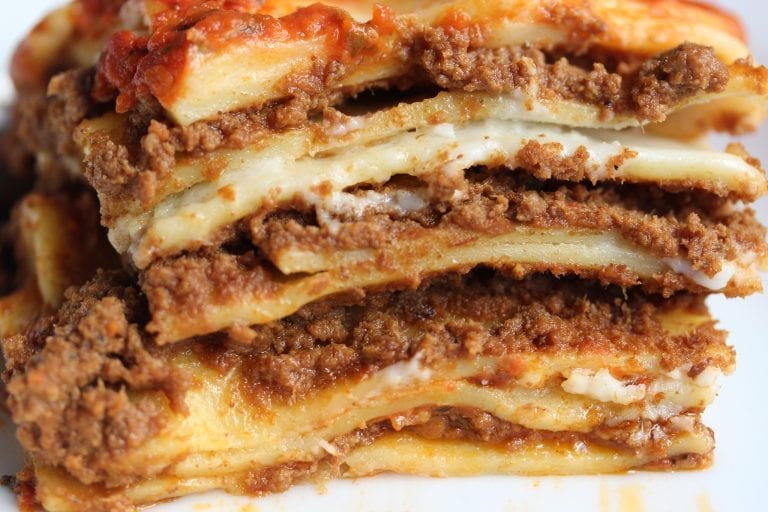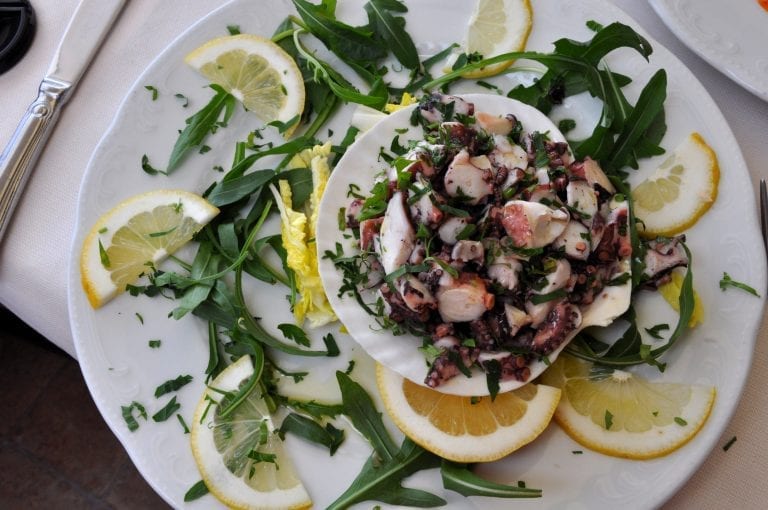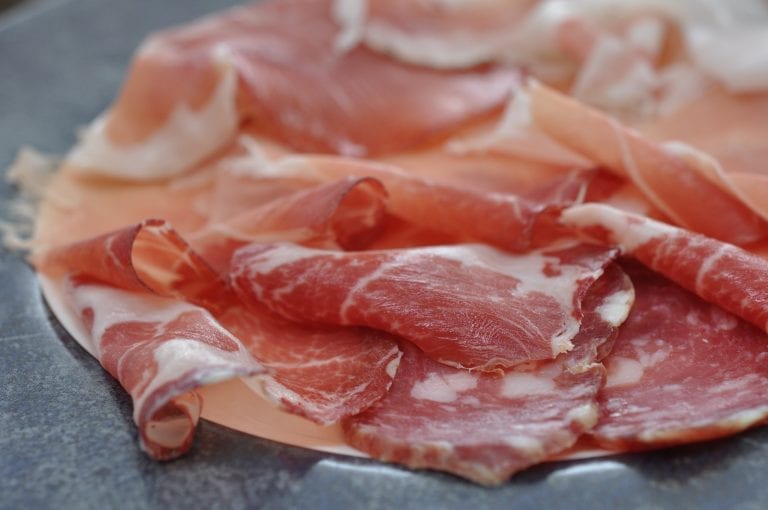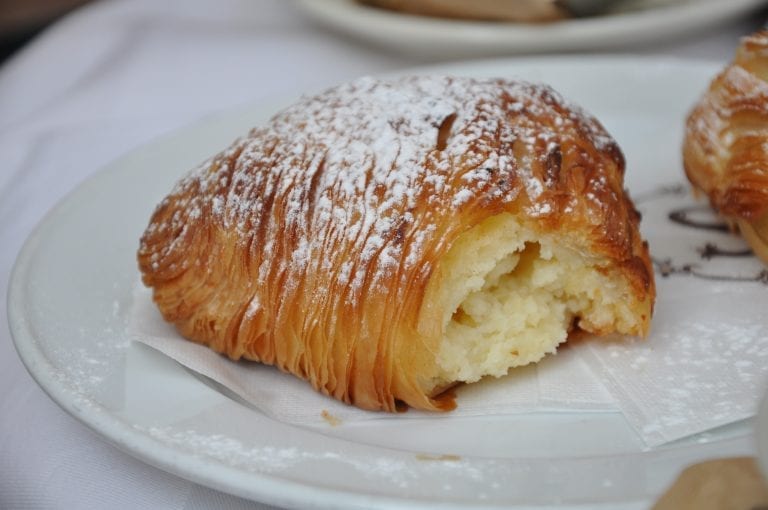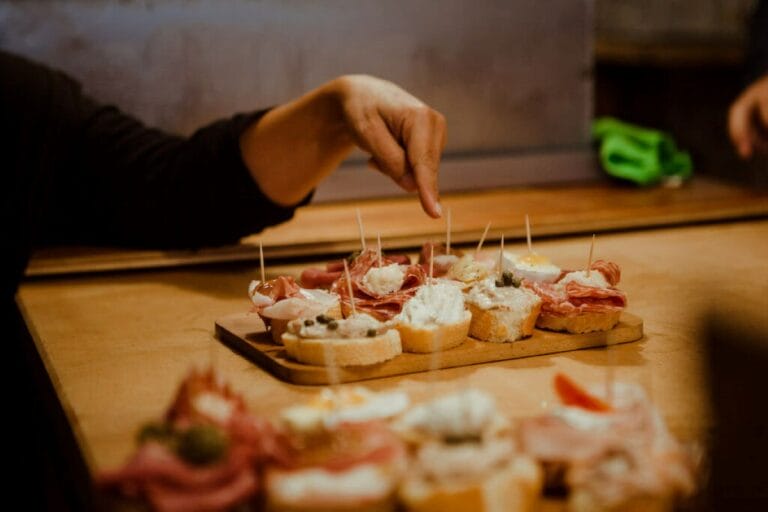
16 of The Most Iconic Foods to Eat in Italy: An Insider’s Guide
December 28, 2024
The ultimate challenge of dining in Italy? Confronting the undeniable reality that trying everything is probably impossible. With a limited number of meals at your disposal and a finite stomach capacity, you’re up against an infinite array of Italian dishes that are deemed absolute musts.
From regional specialties to the finest seasonal delicacies, you would need multiple lifetimes to sample all the best Italian food, and that’s before you even consider dessert and drinks.
Read along for our pick of the 16 most iconic foods to eat in Italy that you should prioritize making time (and stomach space) for. Taken together, they sum up the heart and soul of the various cooking traditions that exist around the country.
And if you’re already craving some of these iconic dishes, join us on one of our food tours in Rome, Florence, Bologna, Naples, and Venice to sample a few of our favorites!
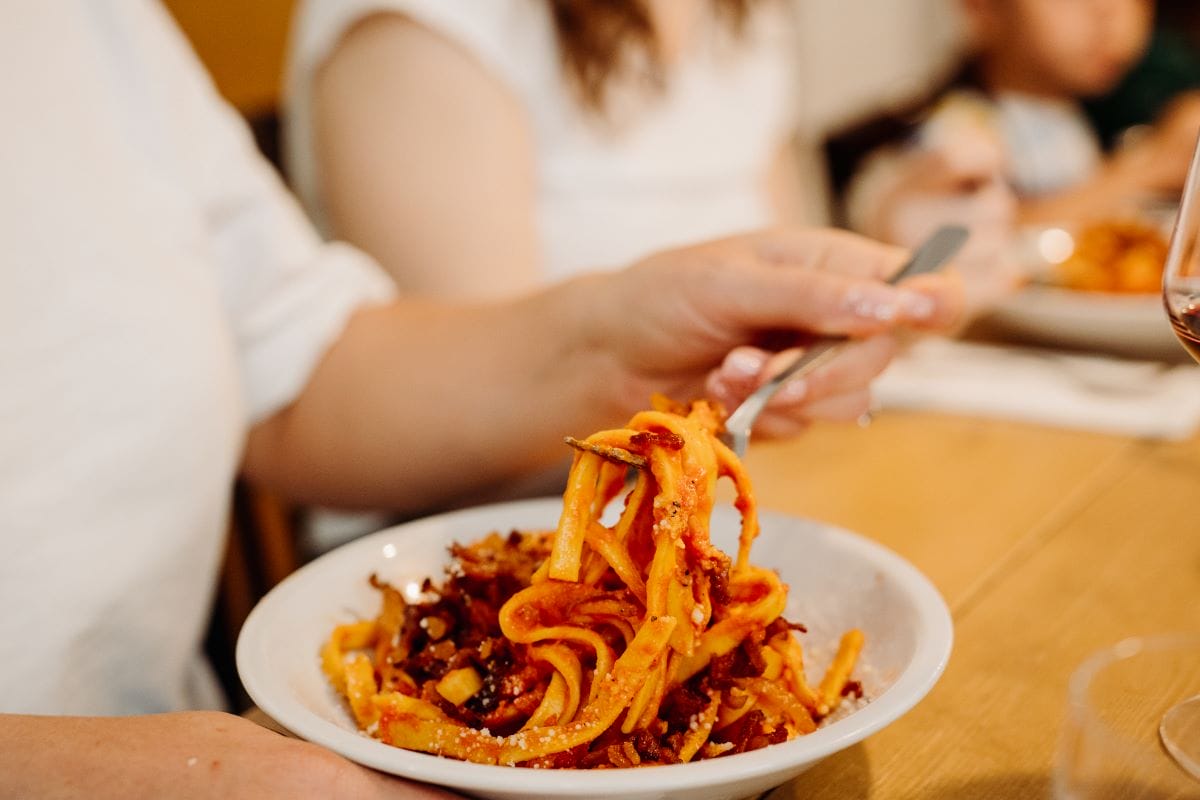
Pasta is so very ubiquitous in Italy, but there are some specific dishes that you just can’t miss.
Table of Contents
TogglePizza
A list of the most iconic foods to eat in Italy wouldn’t be complete without the humble pizza. Easy, cheap, and filling, pizza has long been a common snack or meal, especially in Naples where tomato sauce was first added.
In 1889, during Queen Margherita’s kingdom tour, she requested a dish she saw her subjects eating. An entrepreneur served her a mix of tomato sauce, mozzarella, and basil, what we know today as the iconic Margherita pizza. Its colors mirror the Italian flag and Naples’ history with the Queen, and the city asserts its pizza birthright due to Margherita, though not all agree with this claim.
Today, there are essentially two types of pizza to choose from in Italy: Neapolitan-style pizza, or Roman-style pizza.
- Neapolitan-style pizza: This pizza has a thick, fluffy crust and tends to be a little smaller in diameter because the dough hasn’t been rolled out as far and it’s more filling.
- Roman-style pizza: This has a paper-thin crust and just the slightest crunch (you don’t want it to be soggy!) It’s larger in diameter but typically lighter and less of a gluten bomb.
You can’t go wrong with either, though the common rule of thumb is: When in Rome, do as the Romans do, i.e., eat Roman style pizza. When in Naples, naturally, do as the Neapolitans do.

No matter what toppings you choose, Neopolitan pizza is heaven on a plate.
Bottarga
Smoked eggs from the rat of the sea. Wait, what?
Don’t be put off by this description of an Italian delicacy—the other way to describe bottarga is “Sicilian Caviar.” In August and September southern Italians take the roe from gray mullets, salt it, press it, and then leave it to air dry for six months. The result is a solid hunk of eggs the color of amber and blood oranges that, when sliced and eaten or grated over pasta, blossoms into a gloriously savory, smoky, and briny bouquet.
Though essentially a poor man’s answer to preserving seafood in the days before refrigeration, bottarga is now considered one of the most sought after and luxurious foodstuffs in Italy, right up there with truffles (more on those later). We recommend it grated over pasta, or simply sliced thinly and drizzled with lemon juice and olive oil.

Different regions in Italy have their own methods of producing and using bottarga. For example, Sardinia is known for its Bottarga di Muggine. Photo credit: Shunichi
Lasagna
Like most Italian dishes, the origins of lasagna are hotly contested, but we can at least say that its stronghold is in the region of Emilia-Romagna, where it transformed from a poor man’s food to a rich meal filled with the ragù, or meat sauce.
Traditional Italian lasagna wasn’t made with tomatoes (remember, those came over from the New World in the 16th century); only ragù, béchamel sauce, and mozzarella or Parmigiano Reggiano—or a combination of the two. Even today, only a bit of tomato or tomato sauce is used in a traditional ragù, unlike most Italian-American dishes, which go heavy on the tomato sauce.
Though you can find lasagna throughout all of Italy, there’s nothing like trying the hearty dish in Emilia-Romagna with homemade noodles, fresh ragù, and a generous dollop of regional pride.
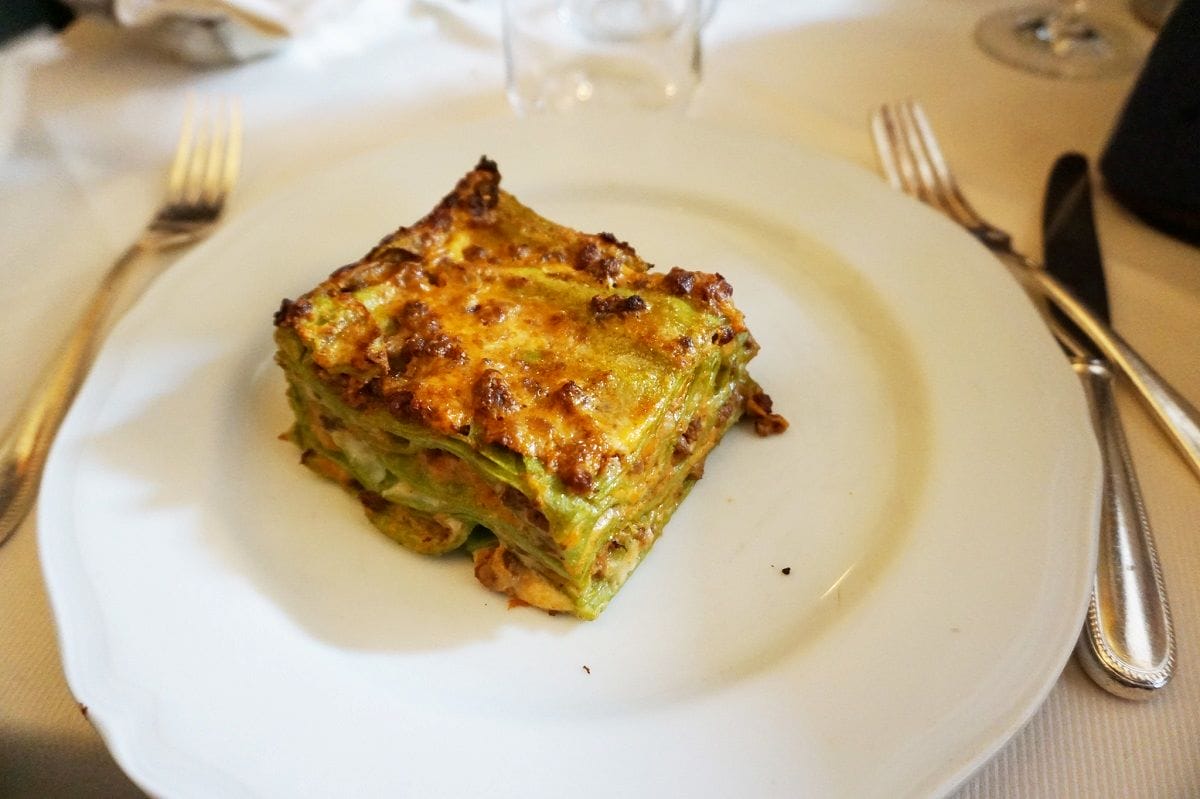
If you’re in Bologna, make sure to try green lasagna. We love it! Photo credit: Gigi Griffis
Fiorentina Steak
A bistecca fiorentina, or Florentine T-bone steak, covers all of the characteristics of Italy’s best dishes: a specific cut of meat from a specific cow prepared in a very specific way all within the confines of a specific region—Tuscany.
In the case of the enormous bistecca fiorentina, it’s a T-bone steak cut thick (at least 5 centimeters) from the loin of a Chianina cow raised in Tuscany. It’s cooked for 5 to 7 minutes on each side, depending on the thickness, until the outside is cooked and the inside remains very rare. No sense in asking for a medium-well done steak here—the meat is too thick to even think about it!
Despite all the dogma, there are some variations on the Florentine steak. For one, the meat isn’t always from a Chianina cow these days. Many Florentines are okay with the addition of new breeds but others believe that the enormous size and muscle of the Chianina makes for the best T-bones.
Keep in mind that this dish is best enjoyed in Tuscany, either in Florence or the countryside, and it’s also meant to be shared! When ordering, know that bistecca alla fiorentina is priced by weight; for two people you’re typically looking at 1-2 kg (or nearly 2-4 pounds).
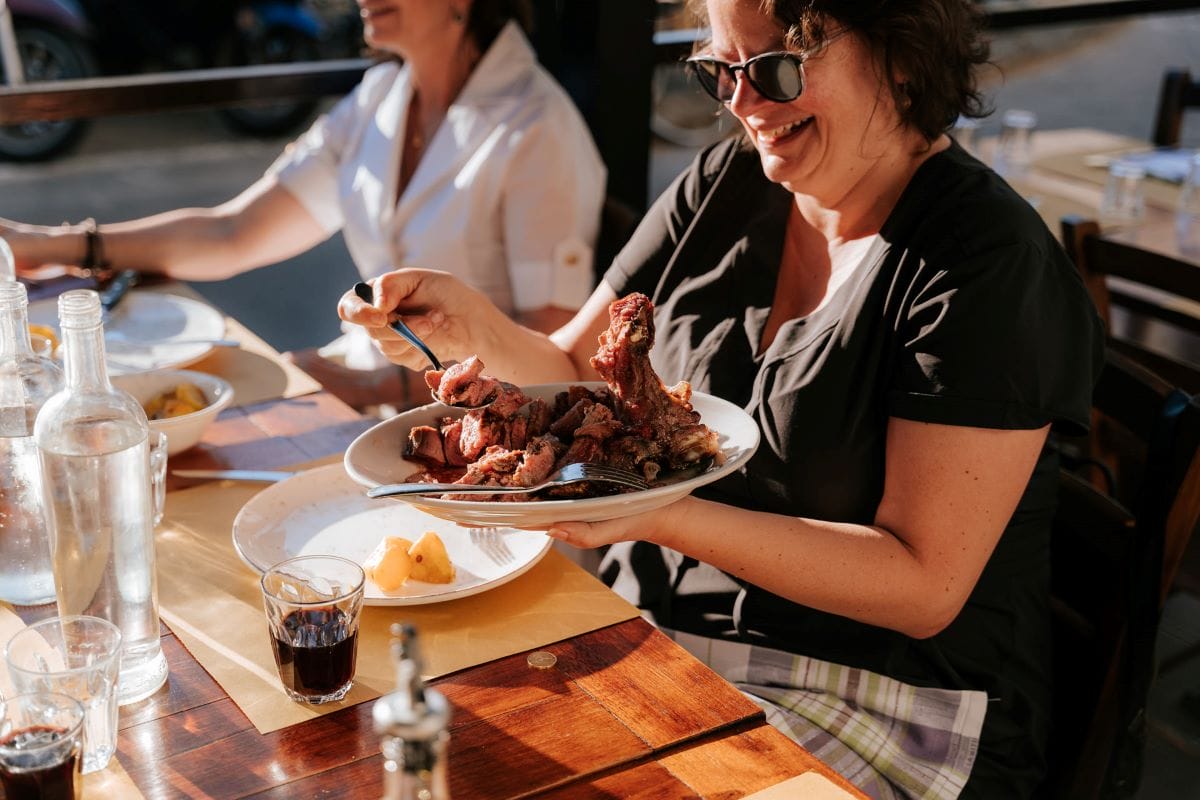
When in Florence, you can’t miss a chance to try the famous Bistecca alla fiorentina.
Ribollita
While on the topic of Tuscany, we would be remiss if we didn’t mention this hearty soup which has become so popular that even Campbell’s sells their own version of it.
Ribollita is a vegetable soup that is thickened with bread instead of meat, because that’s what was cheaper and more readily available for hundreds of years in the desperately poor Italian countryside.
In Tuscany, the dish is considered a special treat in autumn, when the vegetables used are at their most vibrant and the soup explodes with an intense savoriness despite the absence of meat (at least in the traditional versions). Often eaten as a first course instead of pasta in the trattorie of Florence, this is one hearty stew that shows off the immense, and often untapped power of great produce.
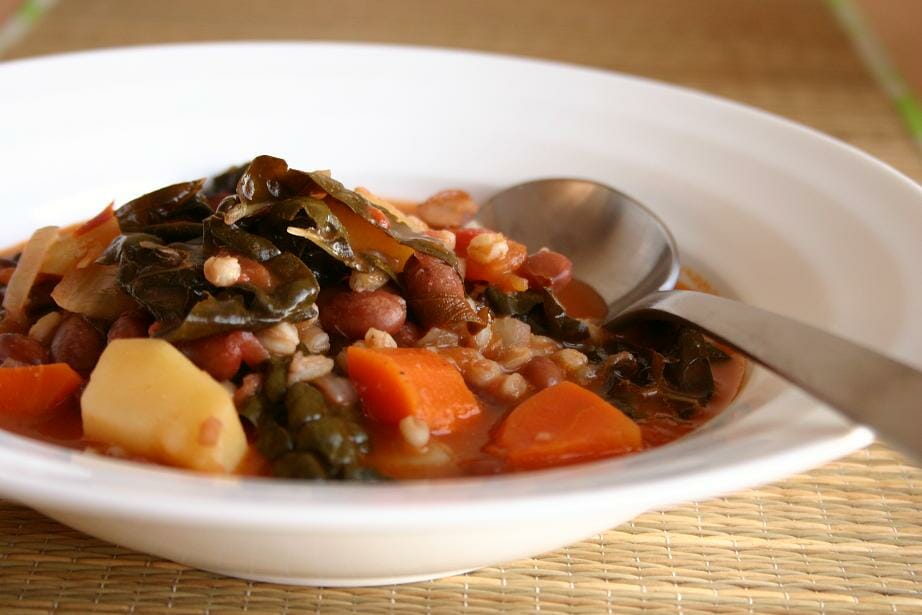
Ribollita is a perfect example of “cucina povera,” which uses simple, inexpensive ingredients to create hearty meals. Photo credit: Ang
Polenta
This corn concoction—which is nearly identical to the grits eaten in the southern states of America—was originally made from whatever starches were handy, including acorns and buckwheat. However, the introduction of corn to Europe in the 16th century saw it become the dominant ingredient of polenta.
Although it lacks the diversity in shapes and textures that pasta has, polenta is the perfect accompaniment to a wide range of meats, especially stewed meats, and it is arguably one of the most comforting foods you can eat when the temperatures drop in cities like Milan, Turin, and Venice. Look for it as a type of purée, or fried into fritters. It also pairs wonderfully with the next dish on our list: ossobuco.
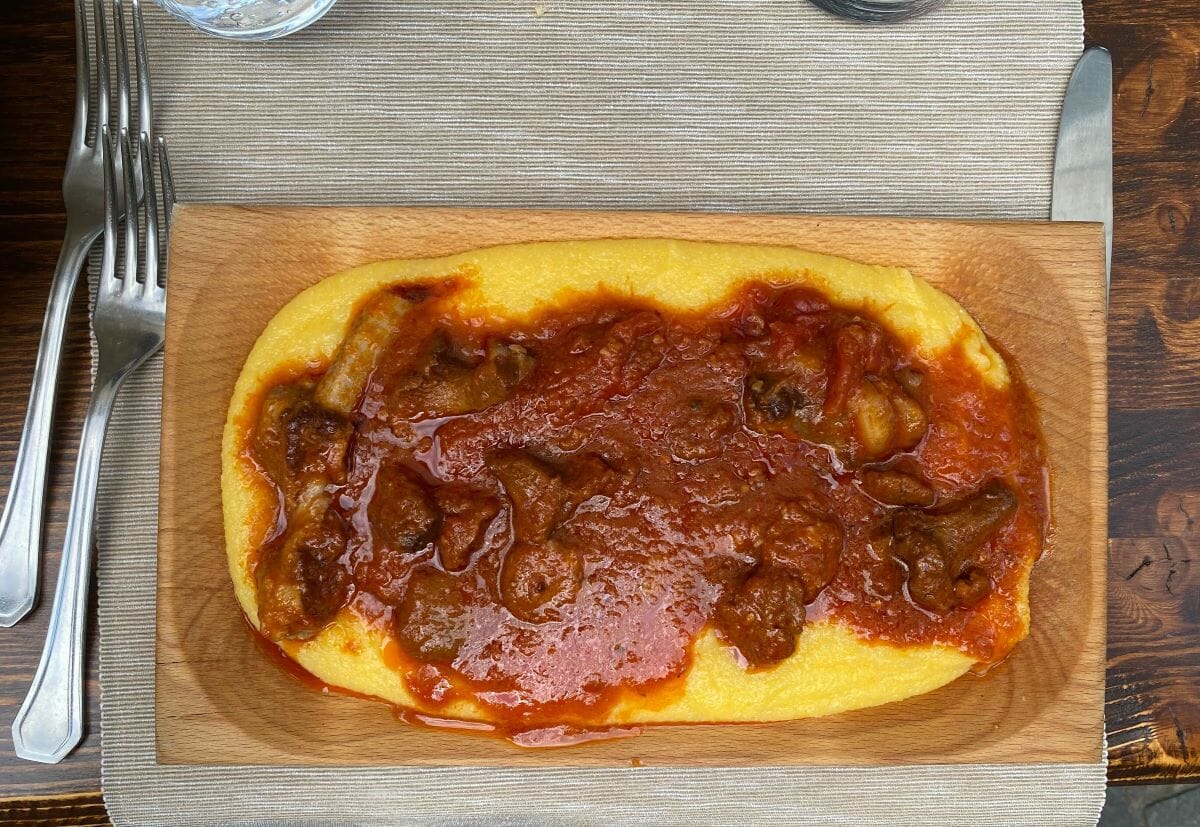
Polenta is a starchy dish which gives pasta a run for it’s money in the north of Italy. Photo credit: Diana Simon
Ossobuco
The world-famous ossobuco alla milanese is a bone-in veal shank, cooked low and slow until meltingly tender in a broth of meat stock, white wine, and veggies. Traditionally, it’s accompanied by a gremolata (lemon zest, garlic, and parsley) but that’s optional, and served along with polenta. Although the Milanese like to claim this meaty masterpiece, there are so many varieties found throughout the Lombardy region.
Despite the popularity of ossobuco (which literally means ‘hollow bone’), it’s not always common to see it on restaurant menus because it needs about three hours of cooking time. If you do encounter it during your travels, definitely don’t miss the opportunity to try it as it’s truly one of the most iconic foods to eat in Italy (at least one of the most iconic meats)!
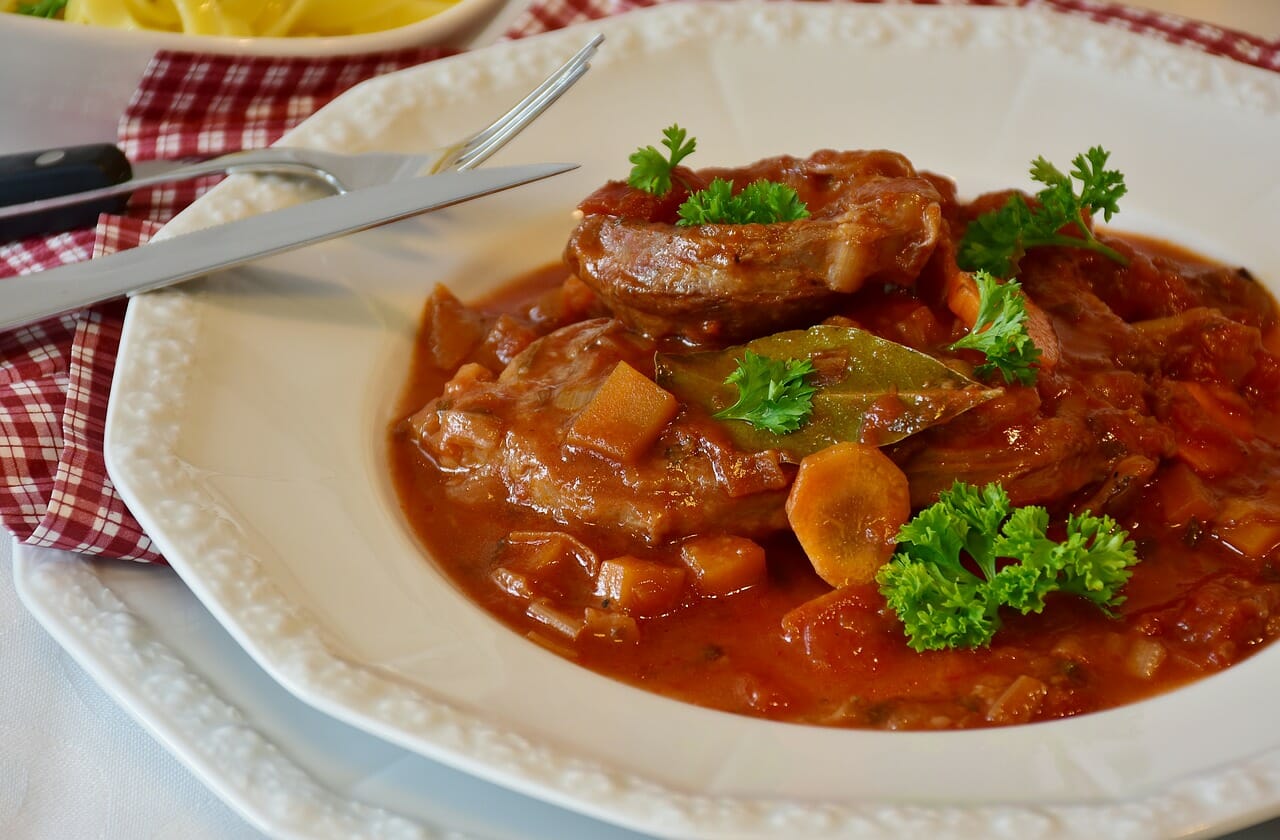
Ossobuco is a popular dish all throughout the Lombardy region. Photo credit: Rita E.
Risotto
Rounding out the holy trinity of Italian starches is rice, which is often eaten as the creamy, luxurious risotto. Ironically, Italians aren’t huge rice eaters, what with all the pasta and the polenta, but they are the largest producers of rice in Europe. While southern Italy is often called the country’s bread basket, Northern Italy, especially Lombardy and Piedmont, are its rice bowl.
It’s fitting then, that the Arborio and Carneroli varieties grown in the vast rice paddies of these regions are turned into one of Italy’s most iconic dishes by being mixed with stock and stirred until they form a velvety semi-soup that perfectly conveys the flavors of anything cooked with it.
The most famous type of risotto is probably the saffron-infused risotto alla milanese, which was invented, according to legend, by the workmen building the Milan Cathedral who were using saffron to dye the stained glass windows and figured they would also throw it into their rice. Other classic versions of the dish include risotto al nero di sepia (with cuttlefish and ink) and risi e bisi (with pancetta and peas), both of which hail from Venice.

Love rice dishes? Then a risotto alla milanese is a must. Photo credit: Diana Simon
Carbonara
It’s possible to go to Italy and never eat anything besides pasta. And if there’s one bucket list pasta that everyone should try at least once, our vote goes to carbonara, a Roman speciality.
This classic dish is deceptively simple: spaghetti, eggs, pecorino cheese, cured guanciale, and black pepper. But despite its simplicity, it can take a lifetime to master (and a good version will change your life!). There are many imitations (thickening the sauce with cream or using bacon instead of guanciale) but we suggest avoiding those.
To ensure you’re getting the real deal, take advice from Italians and seek out the best carbonara in Rome with a local seal of approval. If you can find an authentic carbonara, you’ve successfully found one of the most iconic foods to eat in Italy. Well done!

When in search of a genuine carbonara and aiming to avoid imitations, trusting the recommendations of locals is your best strategy.
Truffles
Ah, truffles. This pungent, elusive fungus is one of the most expensive and coveted foods in the world—and Italy is one of the few countries where they can be found in abundance! Grown only in the wild, they’re found by hunting the forests and mountains of Umbria and Piedmont with dogs or pigs trained to smell them underground.
Truffles in Italy come in two forms, the rare and more aromatic white truffle, or the slightly less aromatic and slightly more common black truffle. They’re undeniably popular and Italian tartufi are one of our all-time favorite fall foods in Italy. They’re commonly sprinkled over pasta, risotto, and omelets, or used in sauces for steaks or other meat dishes.
Truffles grow naturally throughout Umbria, Tuscany, and Piedmont, so you’re more likely to find fresh truffles in local dishes in these areas, but only if you go in the autumn. During any other time of the year the truffles you get will be imported or frozen and they won’t be anywhere near as good.
Insider’s tip: If you make it into truffle country during the fall head to a sagra (celebration) festival such as the famous International White Truffle Festival of Alba in Piedmont held every October and November.
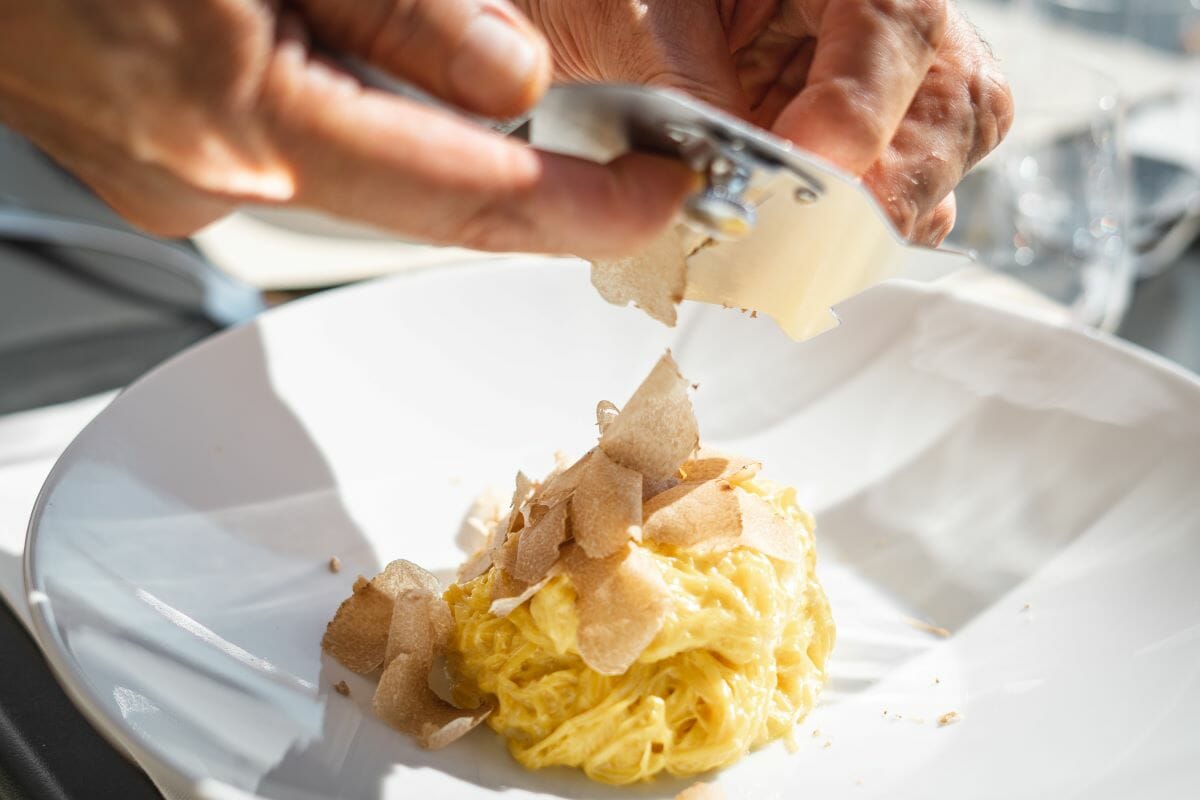
Both white and black truffles are highly prized in Italian cuisine. Photo credit: Andrea Cairone
Focaccia (and other bread)
There are a few key things to know about breads in Italy:
- There are hundreds of types of bread throughout the country
- Not all bread is made with salt (like Tuscan bread)
- The best type of bread is the one baked locally that morning
- One of the most famous Italian breads is the beloved focaccia
Focaccia originates from Liguria, a region located in northwestern Italy, along the Italian Riviera. Reminiscent of a thick pizza dough, classic focaccia is salty, drizzled with olive oil and delicious either by itself, or made into a sandwich. It’s often served open faced, with toppings like rosemary, zucchini, cheese, and olives.
Off the coast of Italy, in Sardinia, the classic bread doesn’t look much like bread at all, instead appearing much more like a pita. Pane carasau, was named for the word carasare, which means to toast. Unsurprisingly, this bread paper-thin bread it always toasted after baking, giving it its wonderful crunch.
In Italy, you’ll find bakeries everywhere, from big cities to tiny towns. Don’t miss the chance to grab some local bread, (or Italian pastries and cakes); it’s a simple joy no matter where you are in the world.

Whether you opt for a classic plain focaccia or one with various toppings, you’re in for a treat. Photo credit: Mary Kresge
Arancini & Supplì
Our Sicilian friends might not be a fan of us lumping beloved arancini together with their Roman cousins, supplì. But after all, they’re both types of fried rice balls.
So, when it comes to supplì vs arancini, what’s the difference?
- Arancini are bigger and rounder in shape and come in a variety of flavors. In fact, its name means “small orange”, for its resemblance in shape and color to the fruit. Common flavors you’ll find include ragù and cheese, or some with veggies like peas, mushrooms, eggplant, and zucchini. You can also find specialty arancini like carbonara or cacio e pepe.
- Supplì is a Roman specialty usually found in pizzerias and served as antipasti. They’re more oval in shape and traditionally contain only rice, tomato sauce, and a large piece of mozzarella in the middle. Their playful nickname “supplì al telefono” originates from the idea that when you break them in half and pull them apart, a delicate cheese string bridges the gap between the two pieces.
For top-quality, steer clear of pre-prepared fried rice balls left under heat lamps. The contrast between these and freshly fried ones is striking. Whether you opt for the Sicilian or Roman version, both are iconic foods to eat in Italy that you’ll be talking about long after your trip.
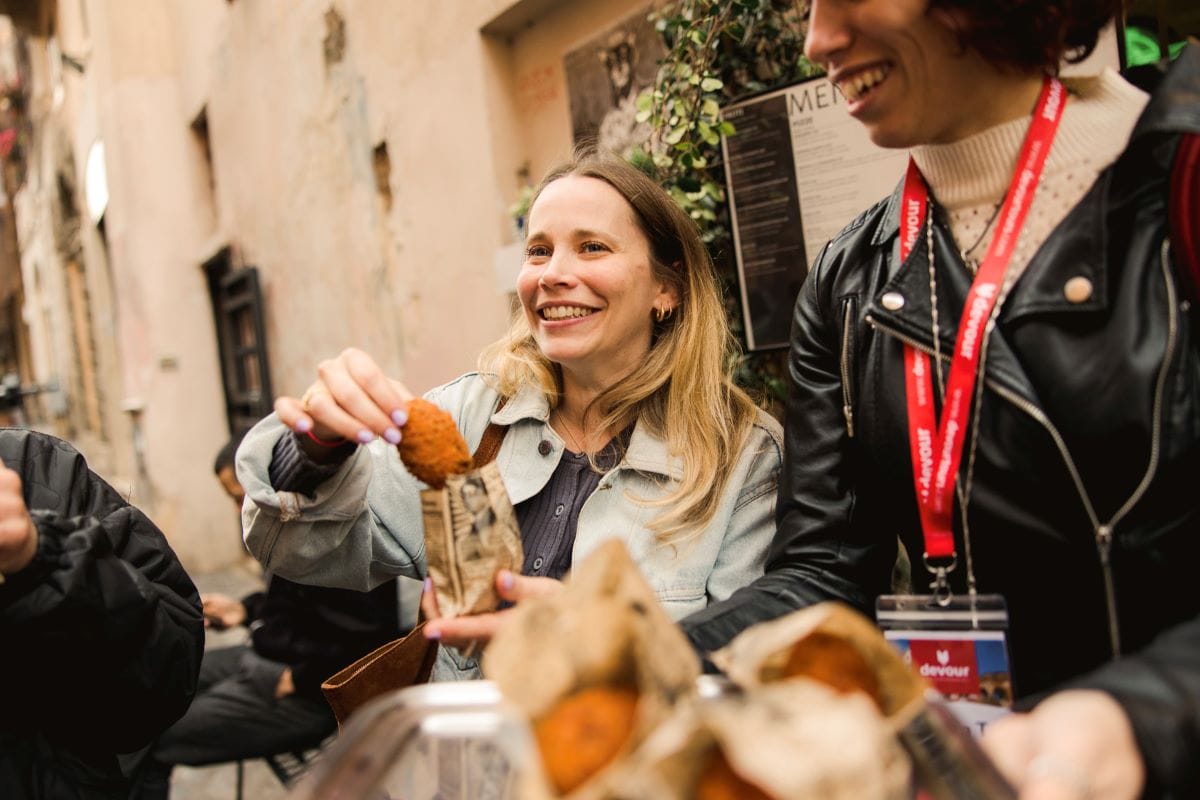
The most popular street food in Rome, Suppli is the ultimate snack.
Coffee
For coffee drinkers, there’s little better than enjoying a coffee in Italy.
However, Italian coffee isn’t like coffee in your local Starbucks. Though some of the dozens of choices might sound similar (latte, cappuccino, etc.) they’re rarely what you have been led to believe they are. For instance, if you were to order a “latte,” in Italy you would simply be served a glass of milk.
Read our complete guide on how to drink coffee like an Italian, to learn when, where, what, and how to drink coffee in Italy. From a regular “caffè” to a cappuccino, there’s a considerable amount of regional difference.
Among all the coffee-loving cities in Italy, Trieste has one of the best coffee and cafe culture. Its long history as a tax-free port brought some of the first coffee beans to the city during Europe’s first coffee craze in the middle ages. Today Italian coffee king Illy has its headquarters there and the city still imports many other brands as well.

Italy has a rich coffee culture, and Italians take coffee very seriously.
Gelato
No trip to Italy is complete without gelato, and it’s totally normal to eat gelato on a regular basis in Italy, especially in the summer (in southern Italy they even eat it for breakfast!). Without a doubt, it’s one of the most iconic foods to eat in Italy.
Though gelato and ice cream are similar, they’re not quite the same. To start, gelato has far less butterfat than ice cream: about 4 to 8% compared to 14% for ice cream in the United States. The low-fat content means that gelato is served a bit warmer and tends to melt in your mouth faster, and it also intensifies the flavor and gives it a more velvety texture.
Moreover, gelato has a much higher density. Regular ice cream has air and water added to increase volume and weight. These additions also make it less flavorful. On the other hand, traditional artisan gelato is super sweet and super flavorful. Another key difference is that good gelato isn’t made for long-term storage.
Finding quality gelato in Italy
When seeking out the best gelato in Italy, there are a few things to look out for.
- Before purchasing, check out the color of certain flavors like pistachio (Does it look earthy colored, or artificial and bright?)
- Look for fruit flavors that are in season (they should be), and consult the ingredient list.
- Pay attention to how the gelato is stored. Artisanal gelato is slow-churned and should lay flat in its container. Beware of giant mounds of gelato—they may look good, but they often indicate lower quality because they’ve been whipped to add more air to the product.

So much gelato, so little time.
Tiramisu
Tiramisu is probably the country’s most beloved after-dinner dessert. This no-bake parfait features layers of soft, sweetened mascarpone cheese and coffee-soaked ladyfingers.
It may be simple to make but not all tiramisu is created equal. A good tiramisu features only the highest quality coffee and mascarpone. Cream and egg whites are sometimes added to the mascarpone to give it a lighter texture, and a variety of cookies and cakes can be substituted for the traditional lady fingers.
Did you know? While tiramisu is undoubtedly one of the most iconic foods to eat in Italy, it’s surprisingly one of the more recent additions, with most accounts dating its creation to the 1960s.

If you love sweets and you love coffee, then you’ll probably love tiramisu. Photo credit: Pietro & Silvia
Digestivo
The term “digestivo” or “digestive” does not refer to one drink, but a class of drinks that are enjoyed after a big meal with the aim of settling the stomach and helping you feel not-quite-so-full. Drinking them dates back to the Middle Ages, when people all over Europe believed in the medicinal properties of alcohol mixed with sugar and herbs.
Although the doctors are still out on the medical benefits of drinking medium to strong liquors after a meal, the fact remains that you cannot say you have enjoyed a real Italian meal unless you top it off with a shot of the hard stuff.
Popular digestives include limoncello, grappa, amaro, cynar, amaretto, and if you’re feeling brave, sambuca, which has enough alcohol to make a horse giddy. If you step off the beaten track in Italy you will also discover all types of nice post dinner tipples made from local fruits and herbs. Don’t be shy, they are always worth a sip.

Every meal is better when followed with a nice crisp glass of limoncello.
This post was originally published on February 8, 2017, and was updated on September 1, 2023.
by Gina Mussio
View more by Gina ›Book a Tour

Pristine Sistine - The Chapel at its Best
€89
1794 reviews

Premium Colosseum Tour with Roman Forum Palatine Hill
€56
850 reviews

Pasta-Making Class: Cook, Dine Drink Wine with a Local Chef
€64
121 reviews

Crypts, Bones Catacombs: Underground Tour of Rome
€69
401 reviews

VIP Doge's Palace Secret Passages Tour
€79
18 reviews

Legendary Venice: St. Mark's Basilica, Terrace Doge's Palace
€69
286 reviews











